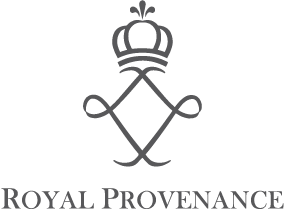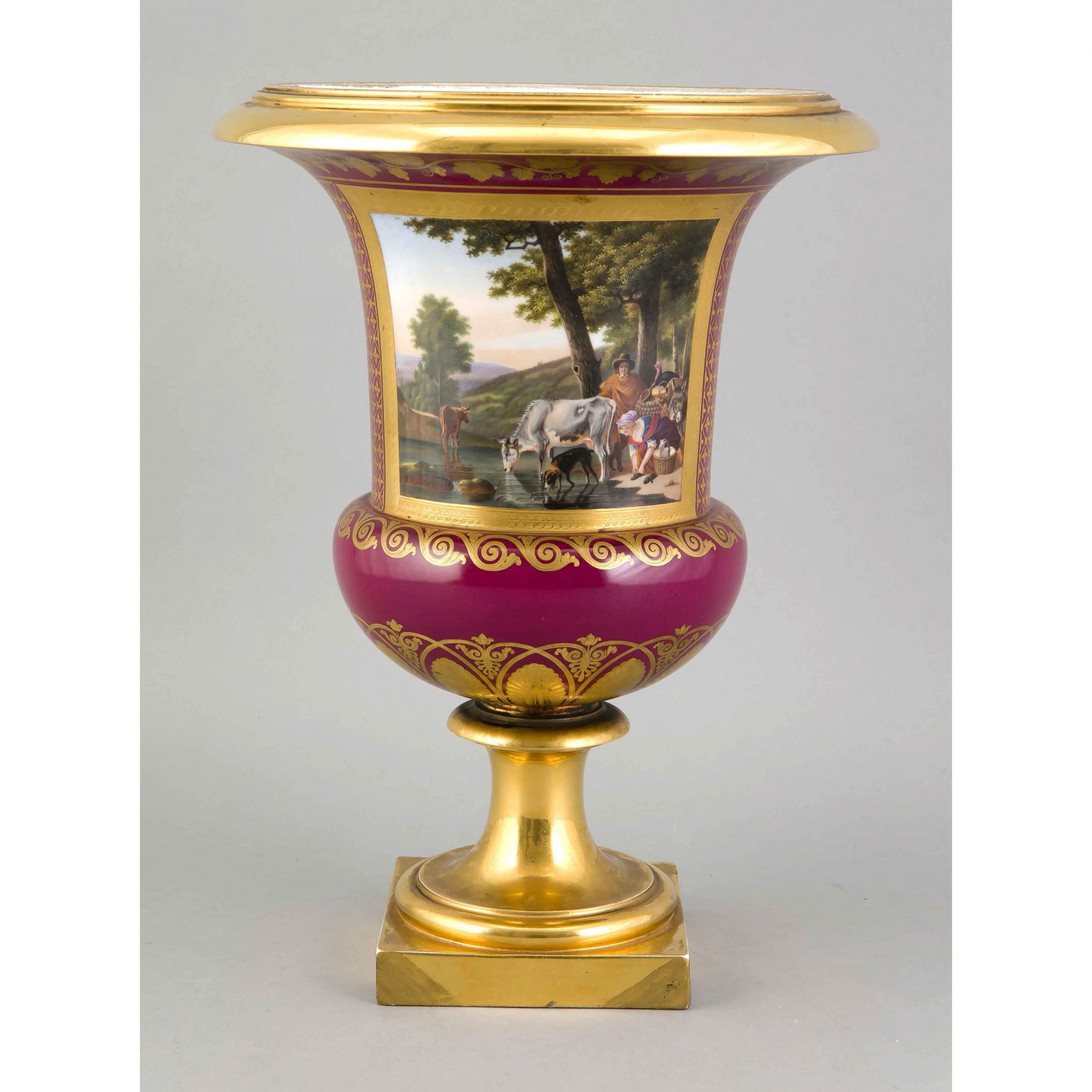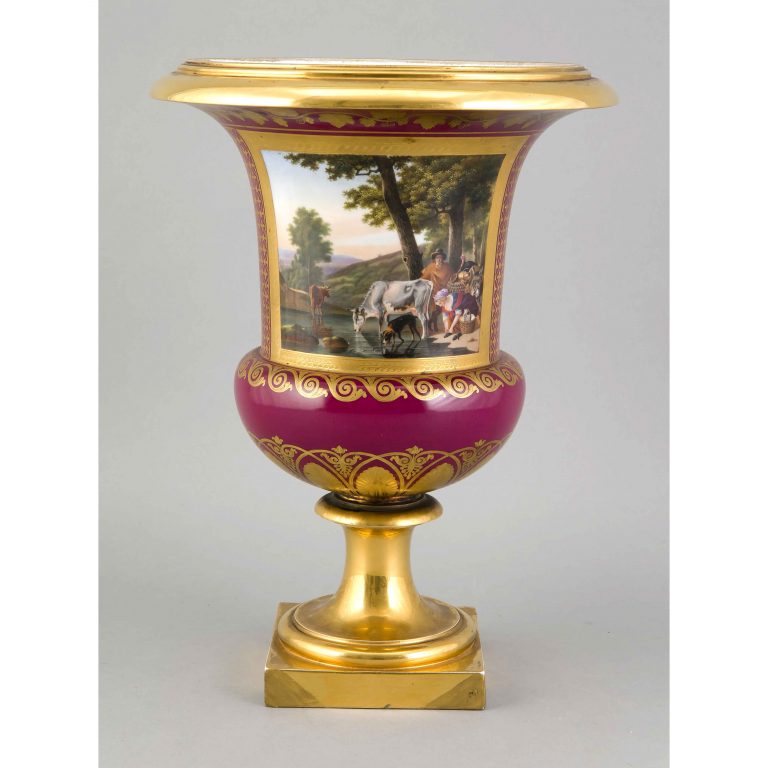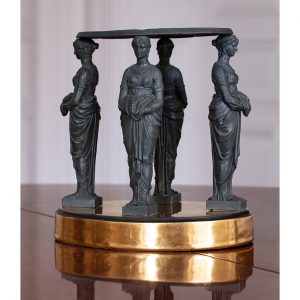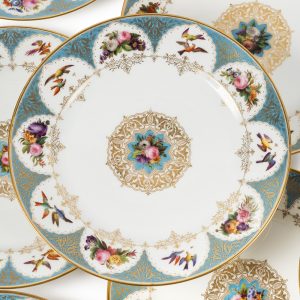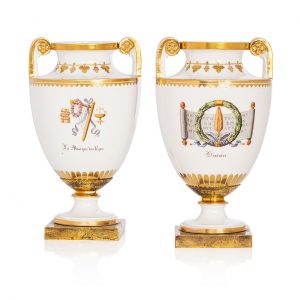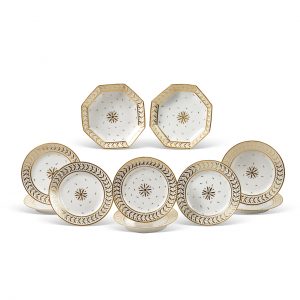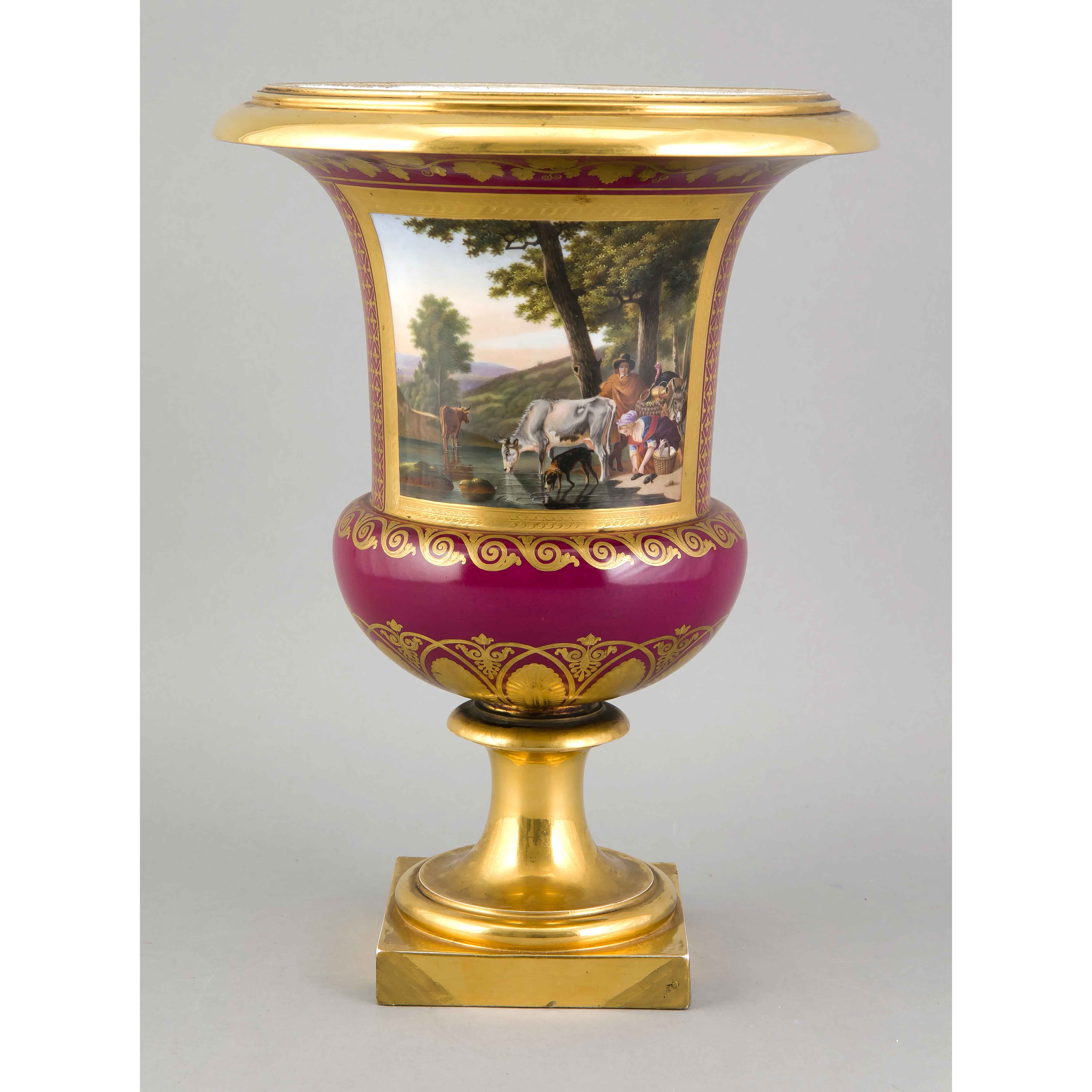Medici vase of 4th size, polychrome decoration of a large cartel surrounded by gold bands representing a family with two oxen, a donkey and a dog on the edge of a stream in a landscape set against a purple background. The upper part of the neck is decorated with a frieze of gold vine leaves and the bulge is enriched with friezes of volutes and palmettes. Circular pedestal and square pedestal with gold base.
Good condition, restorations at the base.
Sèvres royal factory, circa 1818.
Blue stamp mark with the cipher of King Louis XVIII.
The scene signed lower left "F Robert" (Jean-François Robert, active 1806-1843).
H. 31, 5 cm.
Originally, this vase was likely to form a pair with a second vase with similar decoration. In the entry registers of the Sèvres factory's sales shop, on 26 December 1818 under "No. 129", there are « 2 vases forme Medicis 4e [grandeur] fond pourpre ornements en or cartels de paysages » (S.C.C., arch. manuf., registre Vv1. The manufacturing price per piece is £294, the selling price per piece is 400 l.). In the cash sales registers, the following year, « 2 vases forme médicis fond pourpre (…) » vendus au Magasin de Paris en juin 1819 (S.C.C., arch. manuf., registre Vz).
Painted by Jean-François Robert, the landscape represented is most probably borrowed from a composition by the French painter and engraver of Flemish origin Jean-Louis Demarne (1752-1829). The latter is known for his very realistic genre scenes in which the landscape plays a prominent role. The subject could also be taken from a pastoral landscape by Karel Dujardin, a 17th century Dutch painter who inspired Robert in his work in Sèvres.
Born in Chantilly in 1778, from a painters' dynasty, Robert joined the Sèvres manufactory in 1806 where he worked as a landscape and hunting painter from 1807 to 1834. Landscape designer and lithographer, he was a student of Jean-Louis Demarne, whose paintings inspired him to design several pieces of porcelain. He was the landscape painter of the Grand Duchess of Tuscany and the hunting painter of the Duke of Berry.
In Sèvres, he worked in particular on the decoration of the service particulier de l’Empereur (1807-1811) and that of the déjeuner des Chasses (1817-1818) offered to the Duke of Berry. He painted the porcelain plaques that decorate the cabinet-secretary of Versailles (used as a library) made between 1824 and 1829, still kept at the Musée National du Château de Versailles (inv. V1068).
Robert was the inventor of a technical process based on mixtures of metal oxides and fluxes composed of crystal, minium and borax that were mixed with gold, silver and platinum. This process allowed colours and metallic applications to be glazed and incorporated into the surface of the object when the part was fired.
